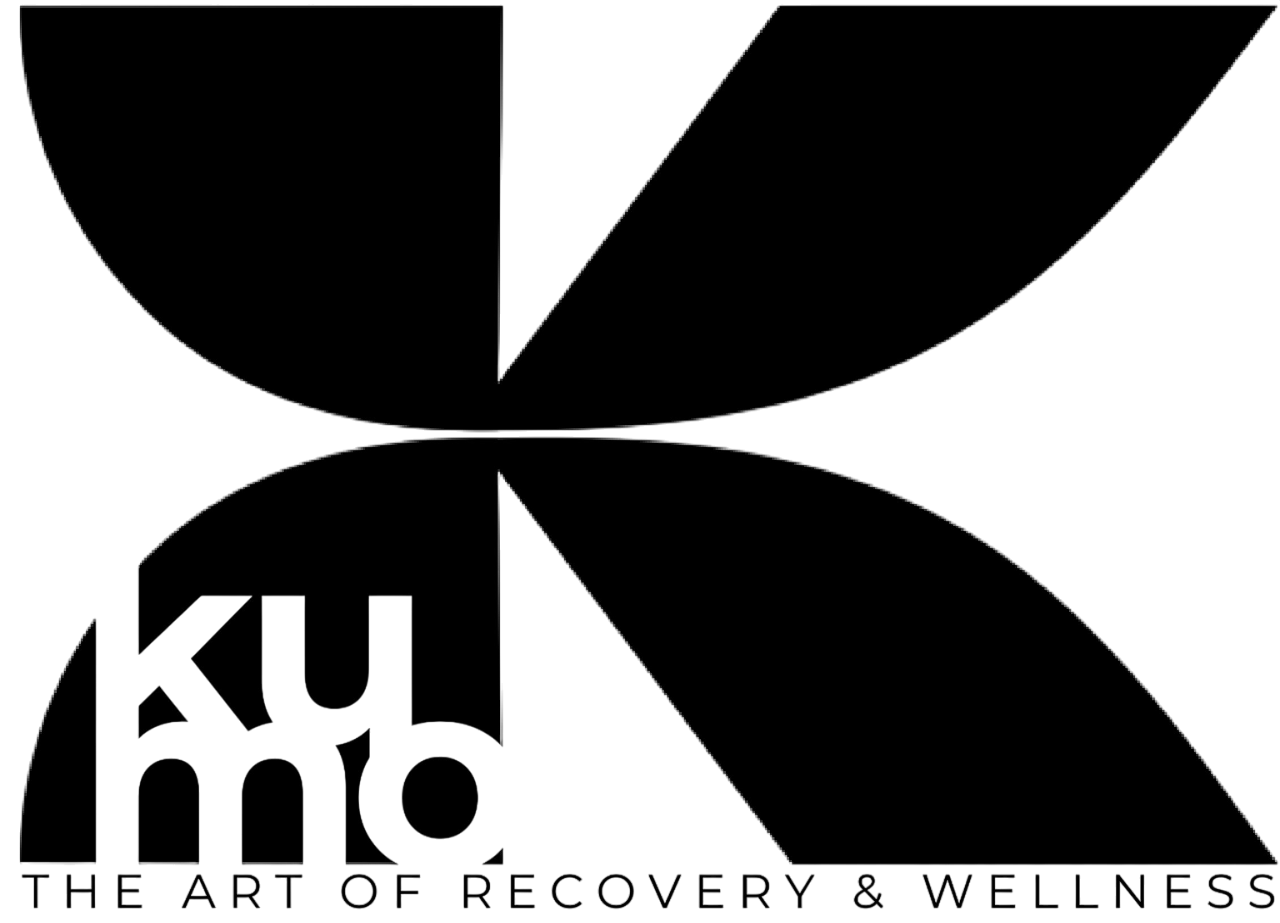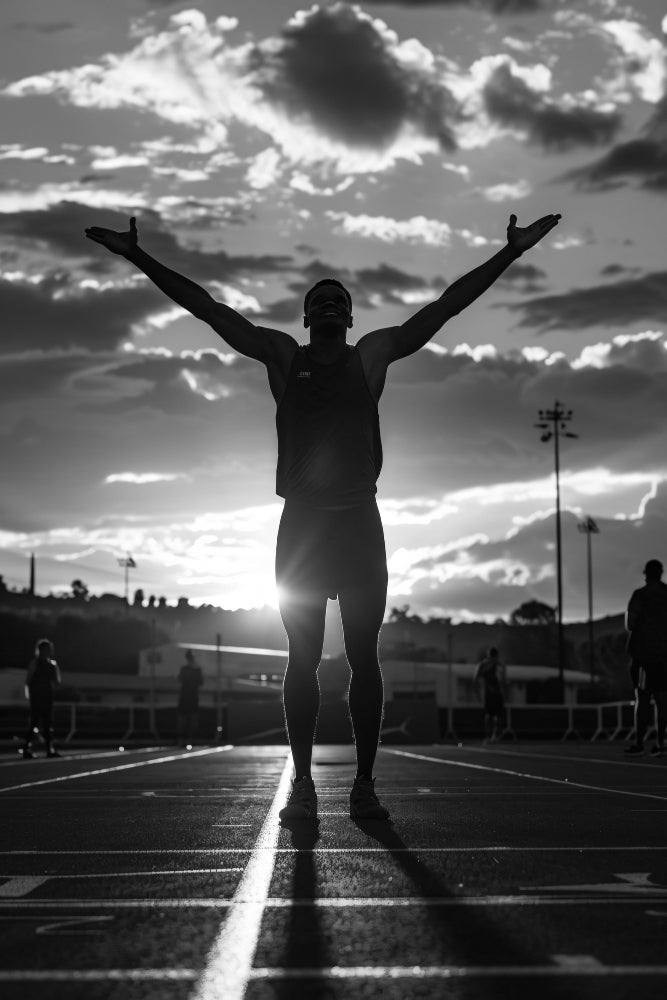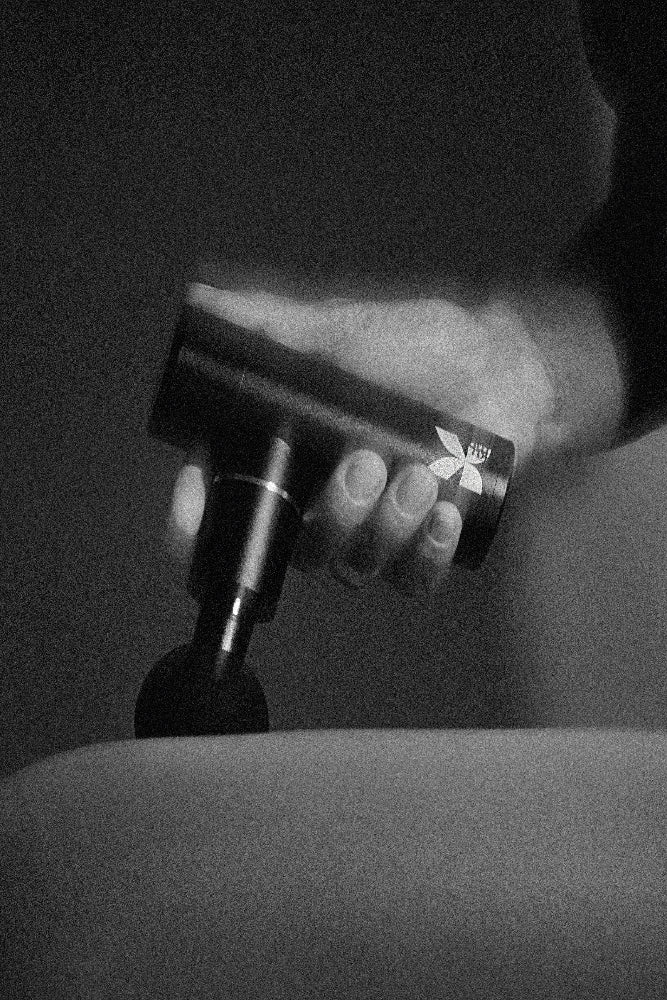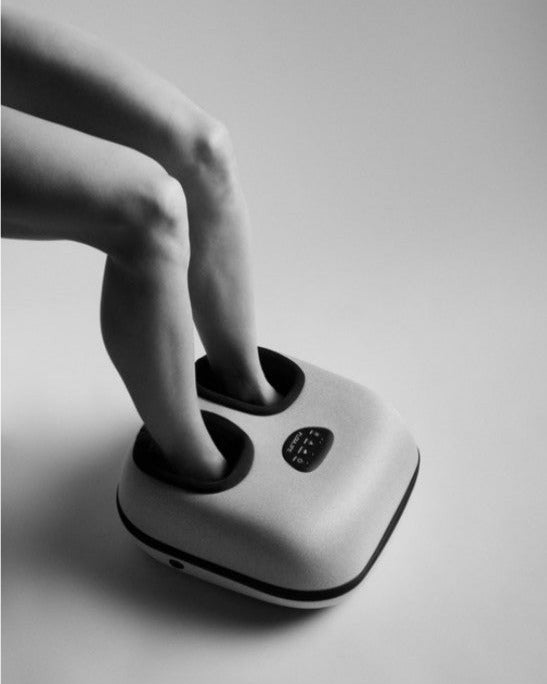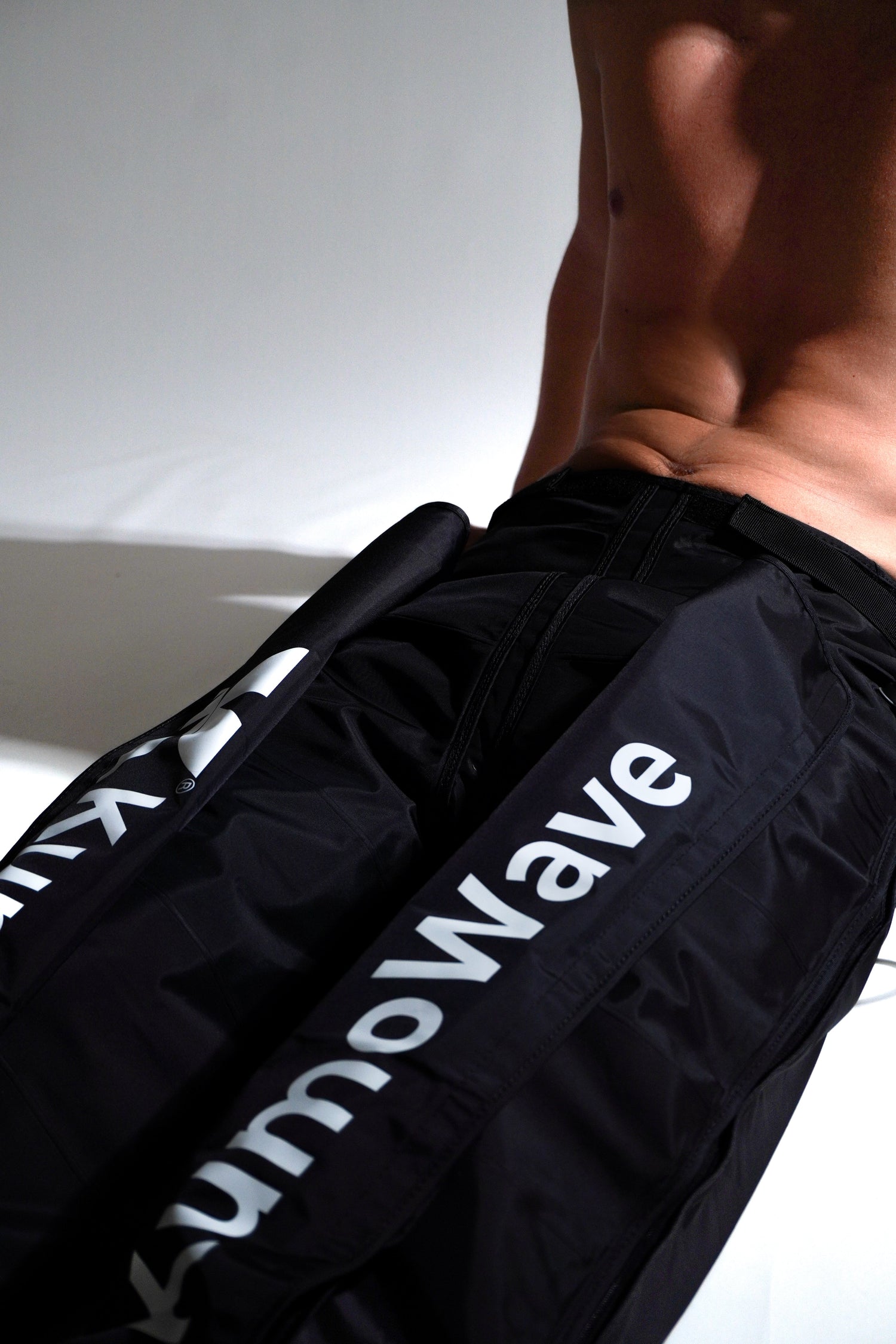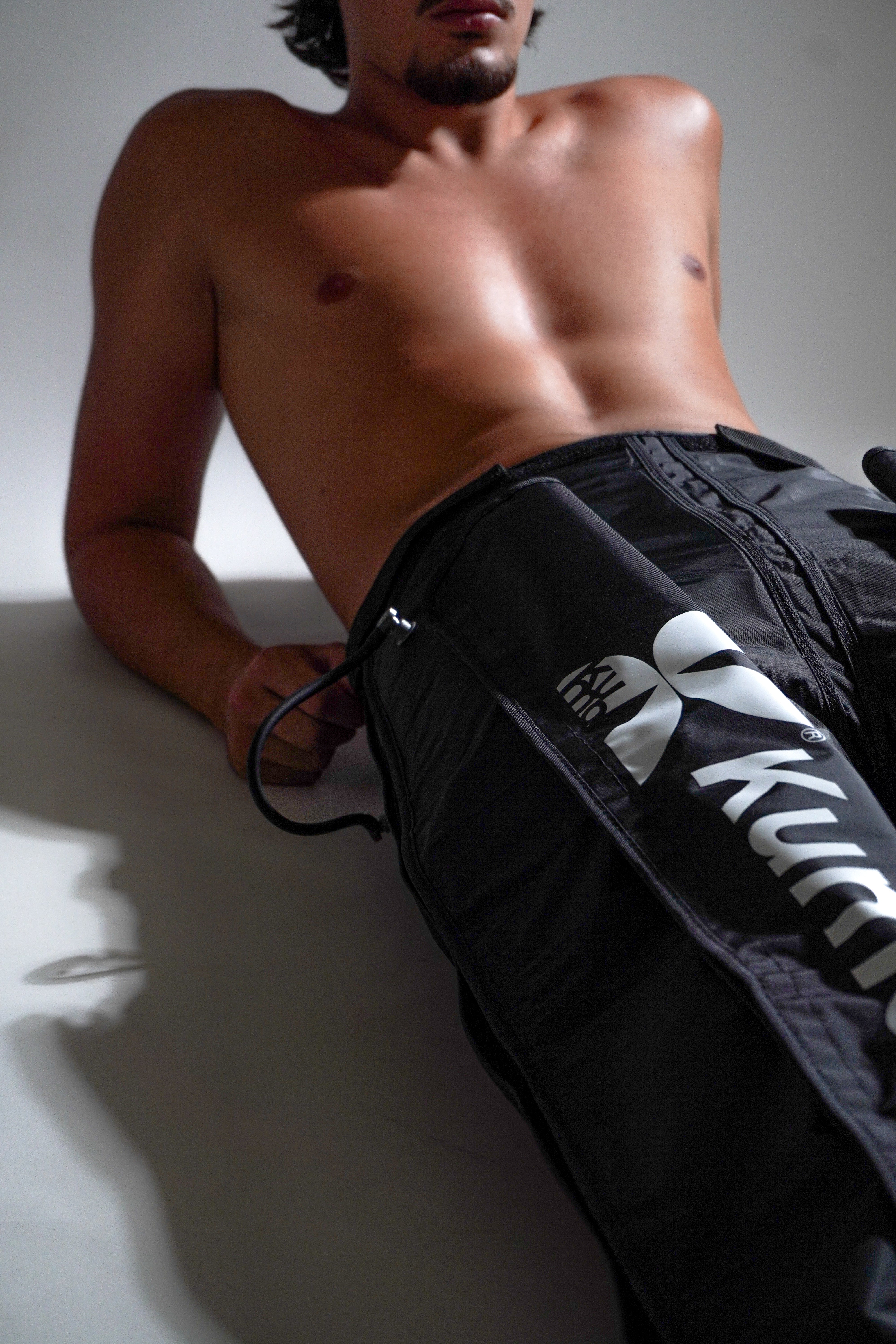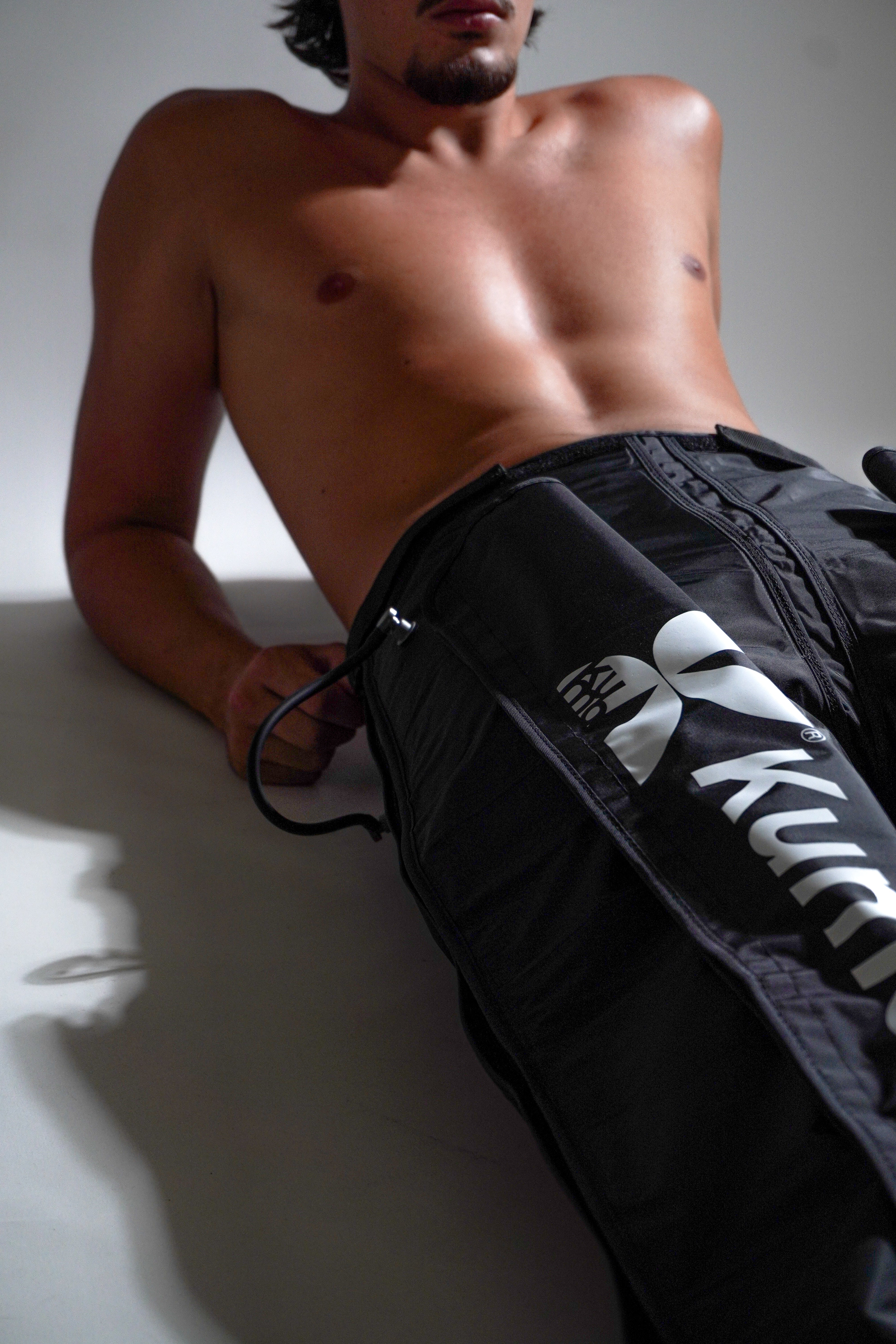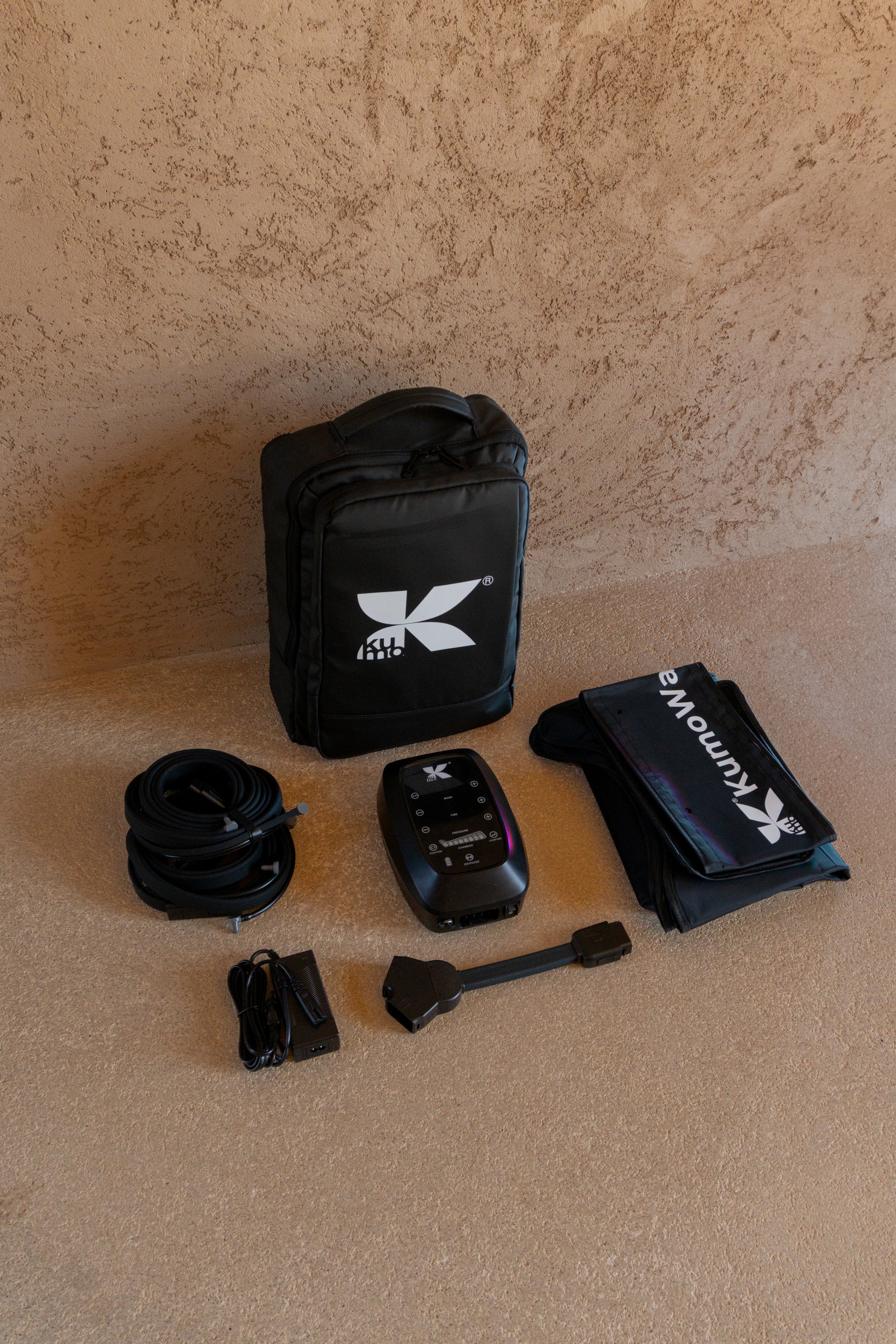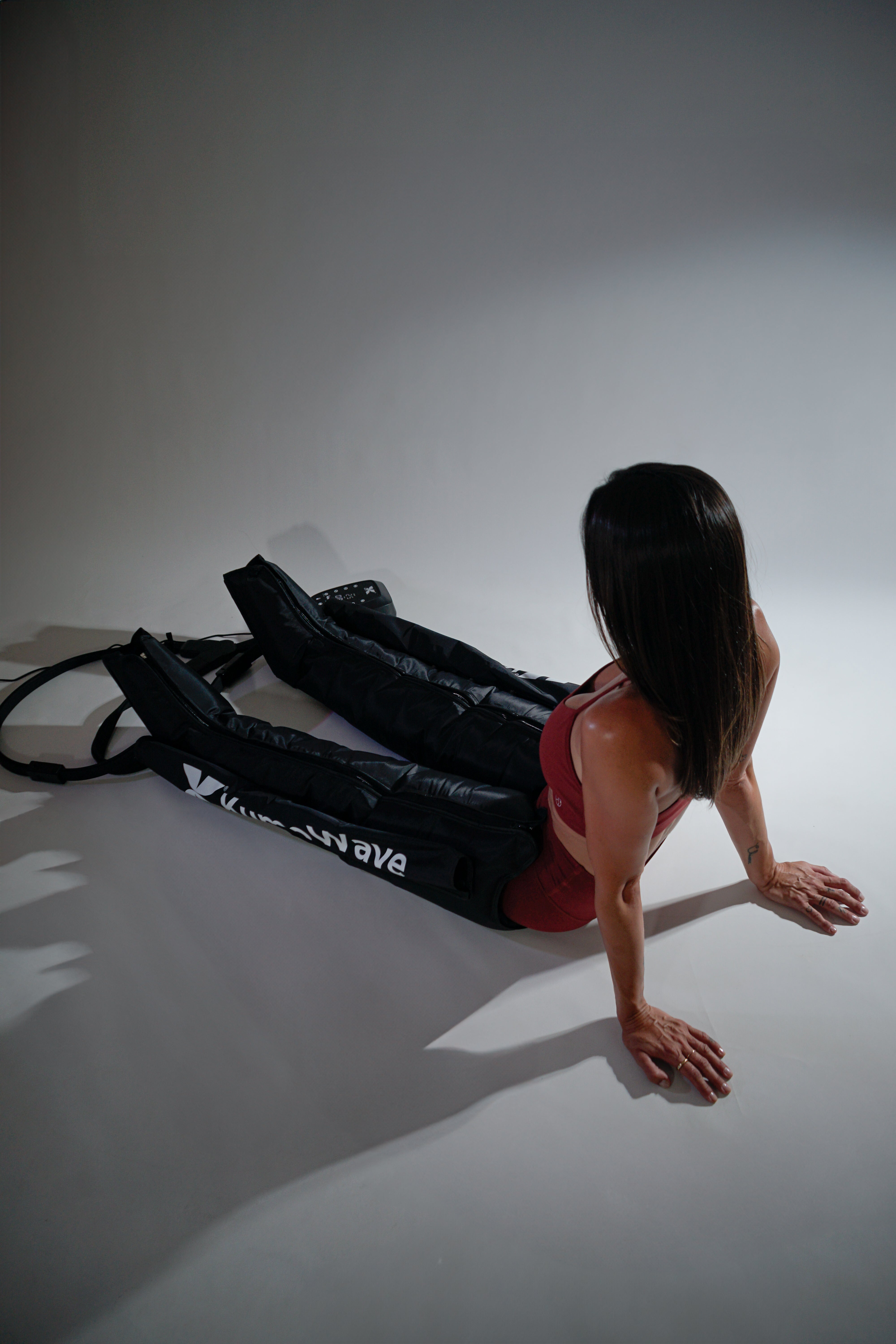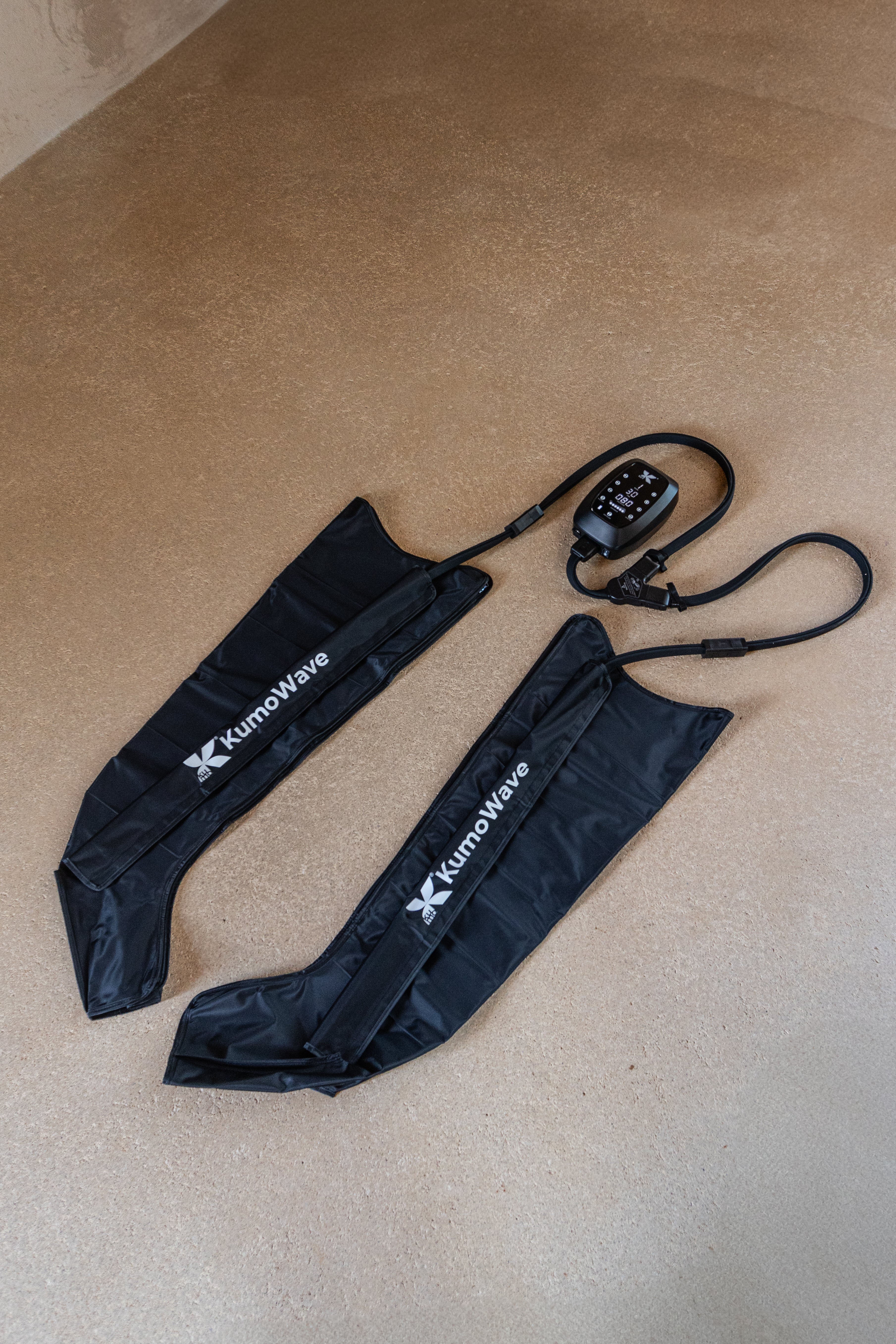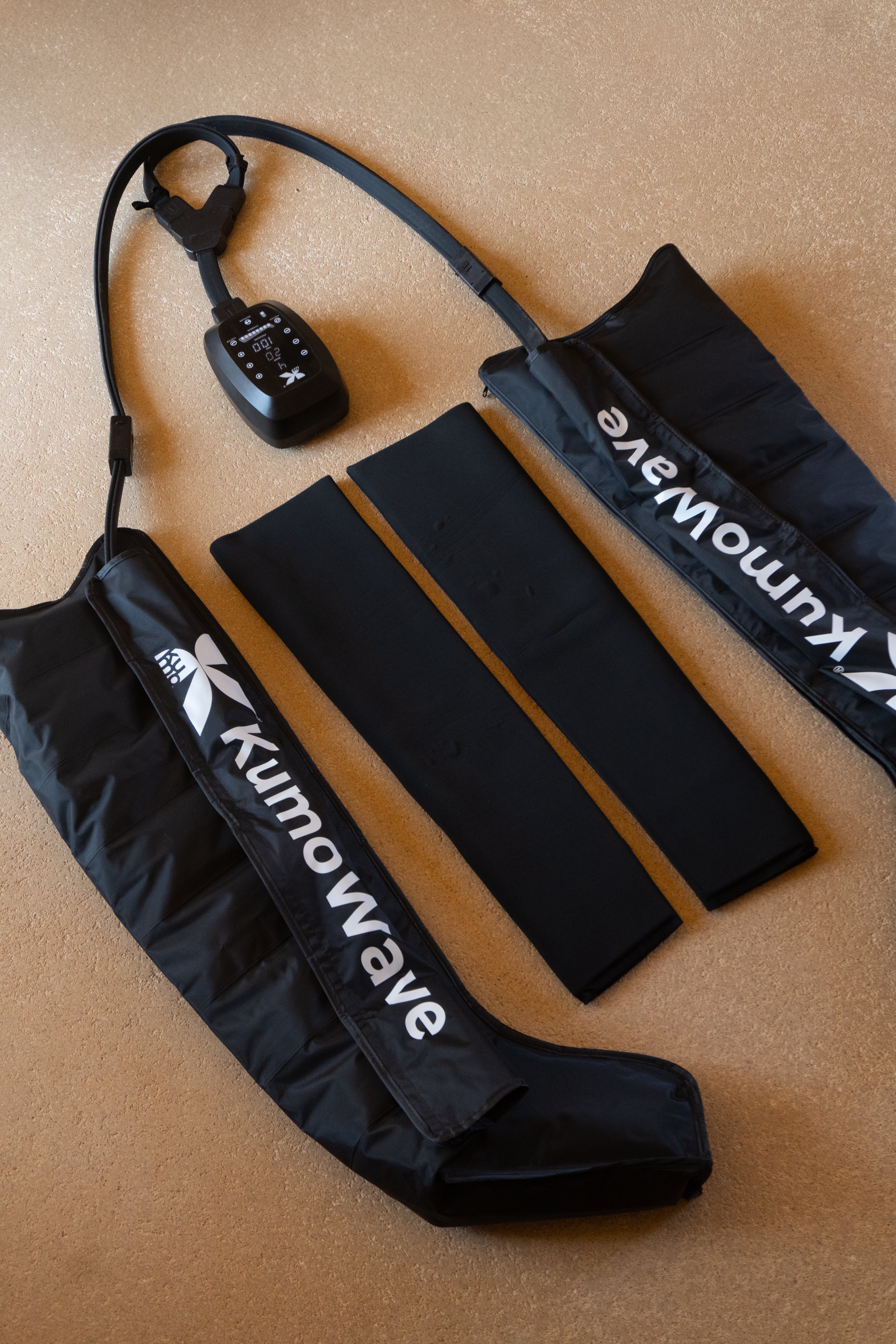Lymphatic drainage at home, with clear and effective guidance. Here you'll find step-by-step instructions, when it's appropriate, key precautions, and tools that can enhance the results without leaving home.
Coming soon
- Gentle pressure, slow rhythm and direction towards the lymph nodes (clavicles, armpits, groin).
- Always “open” the neck and clavicles first; then drain from proximal to distal.
- 10–20 minutes, 3–5 days/week; ideal pairing of diaphragmatic breathing and hydration.
- Avoid if there is active infection, thrombosis, heart/kidney failure or acute pain.
- Pressotherapy and red light can complement manual massage in recovery routines.
| Aspect | Quick recommendation |
|---|---|
| Aim | Promote lymphatic return, relieve heaviness and mild fluid retention |
| Pressure | Very light (skin tightening, painless) |
| Rhythm | Slow, 1–2 seconds per pump |
| Address | Towards clavicles, armpits and groin |
| Frequency | 10–20 min, 3–5 times/week |
| Precautions | Avoid infections, thrombosis, active cancer without medical authorization |
What is lymphatic drainage and why do it at home?
Manual lymphatic drainage is a very gentle touch technique that stimulates the lymphatic system, which transports fluids, proteins, and immune cells. Practiced correctly, it can help reduce mild swelling, promote circulation, and promote well-being. At home, it's a practical option for maintenance between professional sessions or as part of your recovery routine after physical activity.
The key isn't "strength," but rather "direction and rhythm." It's about gently stretching the skin to guide the lymph, not kneading muscle.
Essential preparation (before you start)
Contraindications and when to consult
Avoid drainage if you have an active infection (fever, cellulitis), venous thrombosis, decompensated heart or kidney failure, active cancer without medical indication, open wounds, or undiagnosed acute pain. If you have diagnosed lymphedema, recent surgery, pregnancy, or chronic illnesses, consult your healthcare professional or specialized therapist first.
Diaphragmatic breathing and posture
Sit or lie down comfortably, shoulders relaxed. Take five diaphragmatic breaths: inhale through your nose, inflating your abdomen, and exhale slowly through your mouth. This breathing mobilizes the thoracic duct and "prepares" lymphatic flow. Maintain a posture that does not compress your groin or armpits.
Hydration, gentle warmth and environment
Drink a glass of water 15–20 minutes beforehand. A warm washcloth on your neck/collarbones for 2–3 minutes helps relax tissues. Quiet mobile phones, warm light, and unhurried movements. If you want to integrate recovery technology, explore KUMO's solutions in the start of KUMO .
Step-by-step guide (15–20 minutes)
General rule: “open” the pathways near the large collectors (clavicles) first, then continue from proximal to distal, draining in segments towards the lymph nodes.
1) Neck and clavicle activation (2–3 min)
- Place your hands above your collarbones. Perform very gentle pumps downward and toward your center, 10–15 repetitions.
- With your fingertips on the sides of your neck, draw small circles back and down (toward your collarbones), 10 repetitions per side.
- Repeat the supraclavicular pumps. This "opening" makes everything that comes next easier.
2) Arms and armpits (3–4 min)
- “Open” the armpit: hand on relaxed armpit, 10 gentle pumps inwards and upwards.
- Arm: Divide into segments (shoulder–elbow, elbow–wrist). In each segment, make 5–10 gentle strokes toward the armpit. The sensation is of stretching the skin, not pressing on the muscle.
- Hand and forearm: From the back of the hand to the elbow and then to the armpit, 5–10 passes. Repeat on the other arm.
3) Abdomen and trunk (3 min)
- Just below the ribs, gentle circles upwards and towards the collarbones, 10 repetitions.
- Sides of the trunk (under the armpits), upward sweeps towards the armpit, 10 passes per side.
- Below the navel, gentle sweeps towards the groin, 10 repetitions.
4) Legs and groin (4–6 min)
- English “Open”: hands right on the inguinal fold, very gentle inward pumping, 10–15 reps.
- Thigh: Cut in two. On each segment, make 5–10 passes toward the groin.
- Knee and calf: From the back of the knee to the groin; then from ankle to knee and from knee to groin, 5–10 passes.
- Foot: From the back of the foot to the ankle, then follow the path already opened. Repeat on the other leg.
5) Face (optional, 2–3 min)
- “Open” the supraclavicular area (again, 10 pumps).
- From the center of the forehead to the temples, and from the cheeks to the front of the ear, 5–10 passes.
- From behind the ear, go down the side of the neck towards the collarbones, 5–10 passes.
Tools that can help you
Pressotherapy at home for circulation and leg relief
Pneumatic compression boots apply sequential pressures that promote venous and lymphatic return to the lower limbs. They can be a great complement to your manual routine, especially if you spend long hours on your feet or train intensely. Discover our pressotherapy boots and how to integrate them into your recovery week.
Red/LED phototherapy for recovery
Red and near-infrared light are used to support muscle recovery and rest, which indirectly promotes an optimal tissue environment. Use it after massage or every other day. Learn about our solutions. LED light therapy .
Massage gun: smart use
A massage gun can relax tense muscles that hinder comfort, but it's no substitute for manual lymphatic drainage. If you use one, use a low intensity setting and avoid lymph node areas (armpits, groin, neck). Start with large muscle groups and finish with your gentle drainage sequence. More details in the KumoPulse Air .
Daily habits that boost lymphatic flow
- Walk 20–30 minutes a day; muscle pumps are your best bet.
- Drink water regularly and moderate salt intake.
- Elevate your legs for 10–15 minutes at the end of the day.
- Warm shower, gentle stretching and deep breathing.
Common mistakes and how to avoid them
- Applying too much pressure: The lymphatic system is superficial; if it hurts, you've gone too far.
- Skipping the “opening” of the collarbones/armpits/groin: without this, the flow encounters “blockages.”
- Sweep in the opposite direction: always towards the lymph nodes.
- Going too fast: Slow pace is part of efficiency.
- Ignoring your body's signals: If pain, redness, or worsening edema occurs, stop and seek medical help.
Evidence and realistic expectations
Clinical literature describes manual lymphatic drainage as a light-pressure technique that can help manage edema and heaviness, especially within a comprehensive program (compression, exercise, skin care). To learn the basics and precautions, see the Cleveland Clinic guideline on lymphatic drainage massage and the NHS self-care guidelines for lymphedema. For cancer-related lymphedema, National Cancer Institute offers reference resources. Adjust your expectations: look for comfort and maintenance; for clinical edema, always follow a professional plan.
FAQ
How often should I do lymphatic drainage at home?
For general maintenance and well-being, 10–20 minutes, 3–5 times per week, is usually sufficient. If you spend a lot of time sitting or notice heavy legs, you can do short sessions (5–10 minutes) on alternate days and combine them with walking and leg elevations. In cases of diagnosed lymphedema, the frequency and sequence should be prescribed by a specialized therapist, who will adjust the intensity, duration, and use of compression based on your progress and tolerance.
How do I know if I'm applying the right pressure?
The practical guideline: Gently stretch the skin without digging into the tissue. It shouldn't hurt or leave marks. Think of it as the weight of a coin or a cream that glides effortlessly. If you experience excessive heat, pain, or persistent redness, reduce the pressure or stop the session. Remember that the lymphatic system is superficial; effectiveness depends on a slow flow rate and the correct direction toward the lymph nodes, not on the force applied.
Can I do lymphatic drainage during pregnancy?
Pregnancy is not a contraindication in itself, but it's essential to have your midwife or doctor's approval, especially if you have high blood pressure, a risk of preeclampsia, significant varicose veins, or marked edema. At home, limit your routine to gentle maneuvers, avoid pressure on the abdomen, and always perform leg sweeps toward the groin, in a comfortable side position. Elevating your legs and hydrating your muscles also help. If you experience any unusual symptoms, consult a doctor.
What is the difference between lymphatic massage and pressotherapy?
Manual lymphatic massage uses very gentle skin stretching, targeting specific lymph nodes, at a slow pace. Pressotherapy applies sequential pneumatic compressions, especially useful on the legs, to promote venous and lymphatic return. They are complementary: you can use pressotherapy to relieve leg pressure and manual drainage to "open" pathways and work on areas where boots aren't suitable (neck, armpits, abdomen). If you have a medical condition, consult a professional for advice.
Does it help with cellulite and fluid retention?
It can help reduce the feeling of edema and heaviness associated with mild fluid retention, which often temporarily improves the appearance. However, cellulite is multifactorial (connective tissue, fat, microcirculation), so aesthetic results vary and require consistency, exercise, hydration, and healthy habits. Focus on overall well-being: better rest, less congestion, and lighter legs; aesthetic results follow.
To remember
- Light pressure, slow pace and correct direction are 80% of success.
- Opens clavicles, armpits and groin before draining segments.
- Combine with diaphragmatic breathing, hydration and daily movement.
- Avoid if there is infection, thrombosis, or acute pain; if in doubt, seek medical advice.
- Technology used well boosts results: explore pressotherapy , LED light and KumoPulse Air .
- Need guidance for your case? We're here to help: contact KUMO or visit the official site .
